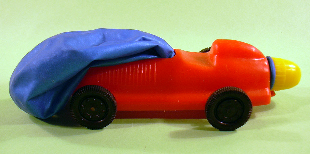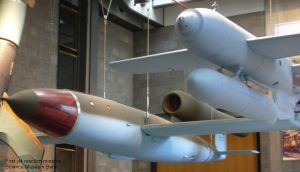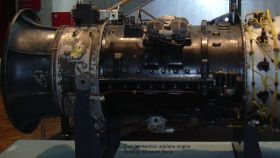
The jet car
Newton's third principle of dynamics (the action equals the reaction) applies in the jet car- the balloon: it pushes the air out and the air pushes the balloon away, which in turn pushes the car.
Newton's second principle of dynamics also applies here: the change of momentum in time is the car's driving force. The change of momentum is superimposed on by the change of velocity of the air escaping in the direction opposite to the direction of the motion of the car and by the change of the mass of the car caused by of the air escape.

The principle of conservation of momentum is also illustrated. If the system consists of the car ms and the air with the mass of - mp) respectively, their summary momentum should be conserved. The momentum of letting the air out of the balloon vpmp must be equal in its value, but directed opposite to the momentum of the car set in motion vsms:

In the above case we can disregard the change in mass after the air escapes. However, if we consider real rockets propelled by liquid fuel, the weight loss following the fuel burn is considerable and must be taken into consideration in calculations. For example, if before the launch the rocket weighs M = 15 tons and if it burns fuel at Q = 150 kg/s, pace and if the exhaust fumes leave the nozzle with the speed of v1 = 3 km/s, after the time of t=1 minute the rocket will reach the altitude of:
In our example it is 64 km. The above equation is based on the solution of differential calculus equation for conservation of momentum for a rocket whose mass decreases.
But this is more difficult a story ...